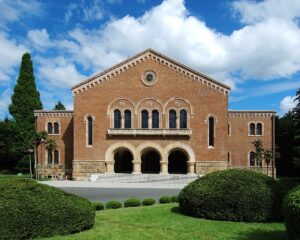Overview (history, characteristics, attractions)
The Japan Folk Crafts Museum is a specialized museum dedicated to showcasing the beauty and value of "mingei," the everyday items and crafts that were born from the everyday lives of ordinary people. Based on the folk art movement advocated by Yanagi Soetsu, it was established with the aim of preserving, collecting, and exhibiting folk art. The museum houses a wide range of excellent works, including ceramics, dyed and woven textiles, lacquerware, woodwork, metalwork, and baskets, and its fascinating collection allows visitors to directly experience the skills of artisans and the lifestyles and culture of the region.
The building and exhibition space incorporate traditional Japanese layouts, and there is also a Japanese garden with a tranquil atmosphere and a teahouse-style space. As you can experience the philosophy of Mingei ("beauty of utility" and "beauty of anonymous makers"), this is a recommended spot not only for craft lovers, but also for those interested in design and aesthetics in life.
Highlights
- Permanent Exhibition: A collection arranged by region and purpose, including everyday utensils, ceramics from folk kilns, fabrics, dyed textiles, lacquerware, etc. You can take a close look at the simple yet refined "beauty of utility."
- Special Exhibitions: Regularly held themed exhibitions featuring crafts artists from around Japan and overseas. You can encounter rare crafts and exhibits with new perspectives.
- Architecture and Gardens: The exhibition rooms feature traditional architectural styles, and the tranquil Japanese gardens offer seasonal views.
- Museum Shop: Reproductions of folk art works, related books, small craft items, souvenirs and everyday items are available for purchase.
- Curatorial activities: Lectures, workshops, gallery talks, etc. are sometimes held, giving you the opportunity to hear from art makers and experts (check the official website for times when events are being held).
Access (nearest station, transportation, etc.)
The nearest station is Meguro Station, which is served by JR, Tokyu, and the subway. It is accessible on foot from Meguro Station (approximately a 10-15 minute walk). If you are taking the bus, you can use the nearest bus stop on the lines around Meguro Station. If you are visiting by car, most museums do not have their own large parking lots, so we recommend using a nearby paid parking lot or using public transportation.
Detailed directions (exits, bus stop numbers, travel time) vary depending on your departure point and mode of transportation, so please check the latest route on the official website or map app before visiting.
Estimated stay (estimated time required)
- First time viewing at a leisurely pace: 1 hour 30 minutes to 2 hours
- Permanent exhibits only - Short-term visit: 45 minutes to 1 hour
- If participating in a special exhibition or lecture: at least an additional hour
Nearby spots
- Meguro River: Enjoy strolling along the river and viewing the rows of cherry blossom trees in spring (it can get crowded during certain seasons).
- Meguro Fudoson (Ryusei-ji Temple): A historic temple where you can worship and stroll around.
- Meguro Art Museum, Tokyo Metropolitan Teien Art Museum, etc.: There are many art spots scattered around, making it convenient for sightseeing hopping between them.
- Hotel Gajoen Tokyo (formerly Meguro Gajoen): Enjoy the glamorous beauty of Japan in the hotel, cafe, and exhibits.
- Cafes and Galleries: The Meguro area has many unique cafes and small galleries that you can stop by while exploring the crafts.
Things to be aware of (crowds, manners, seasonal precautions, etc.)
- Opening hours and closing days: Like many museums, there are closed days (e.g. Mondays) and temporary closures for changing exhibits, so please check the official website for the latest information before visiting.
- Admission fee: The fee structure differs between permanent and special exhibitions. There may be discounts (for students, etc.), so be sure to check in advance.
- Photography: Whether photography is permitted or not varies depending on the exhibits and special exhibitions. Please follow the signs and instructions of the staff inside the museum (in most cases, photography or flash photography is prohibited inside the exhibition rooms).
- Protecting the collection: Please observe proper etiquette within the museum, such as not touching exhibits, not eating or drinking, and leaving large luggage in lockers or the cloakroom.
- During busy times: During special exhibitions, on weekends, and during cherry blossom season along the Meguro River, when the surrounding area is crowded, you may have to wait to enter or there may be traffic delays. We recommend that you visit with plenty of time to spare.
- Seasonal clothing: Exhibition rooms are often air-conditioned for preservation purposes, so it's best to have something to wear over your clothes. Outside, it can get crowded with people enjoying seasonal events like cherry blossom viewing and autumn foliage viewing, so wear comfortable shoes.
The official website also provides the latest information on exhibitions, workshops, admission procedures (reservations required), etc. It is best to check the official website before visiting.



